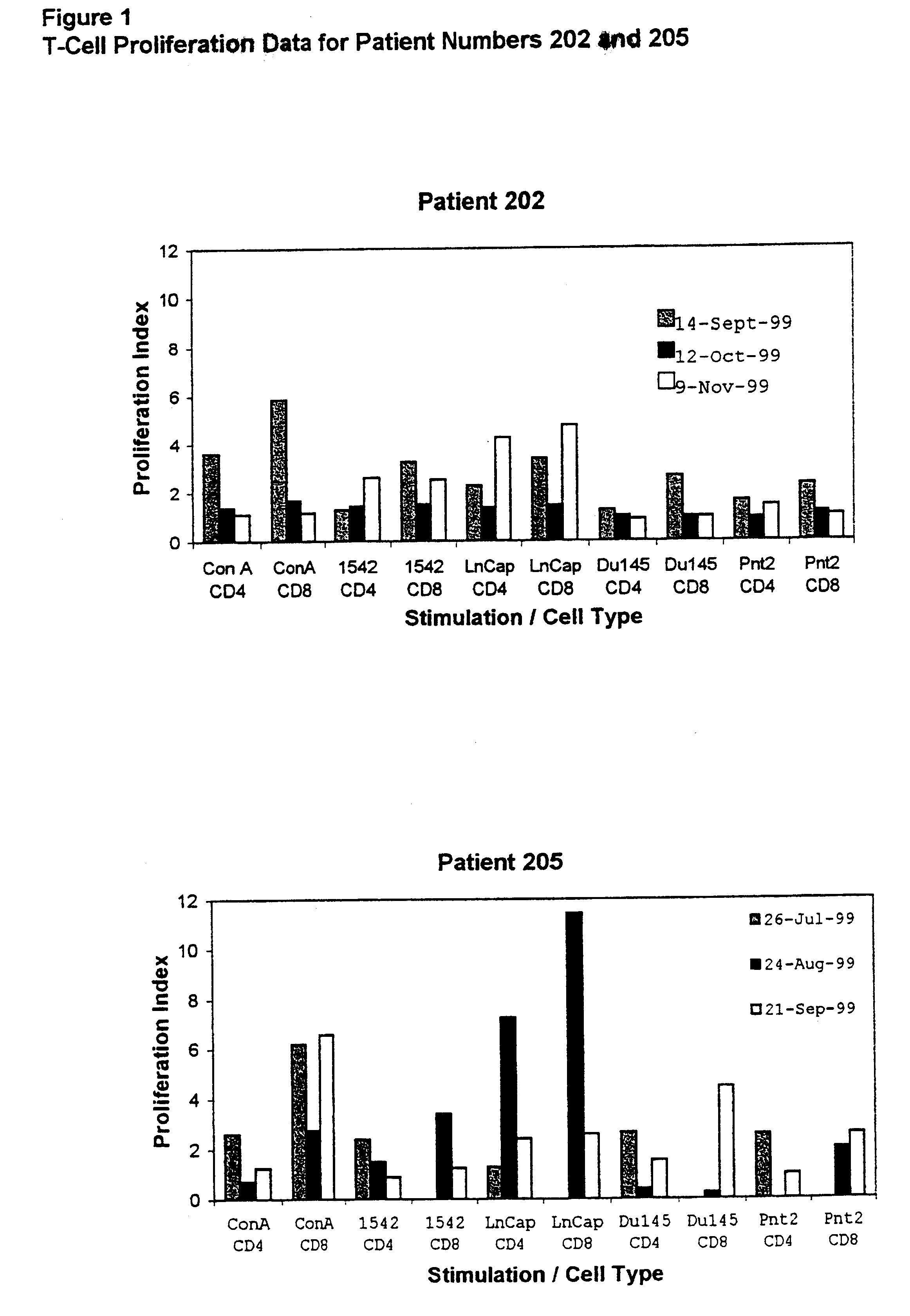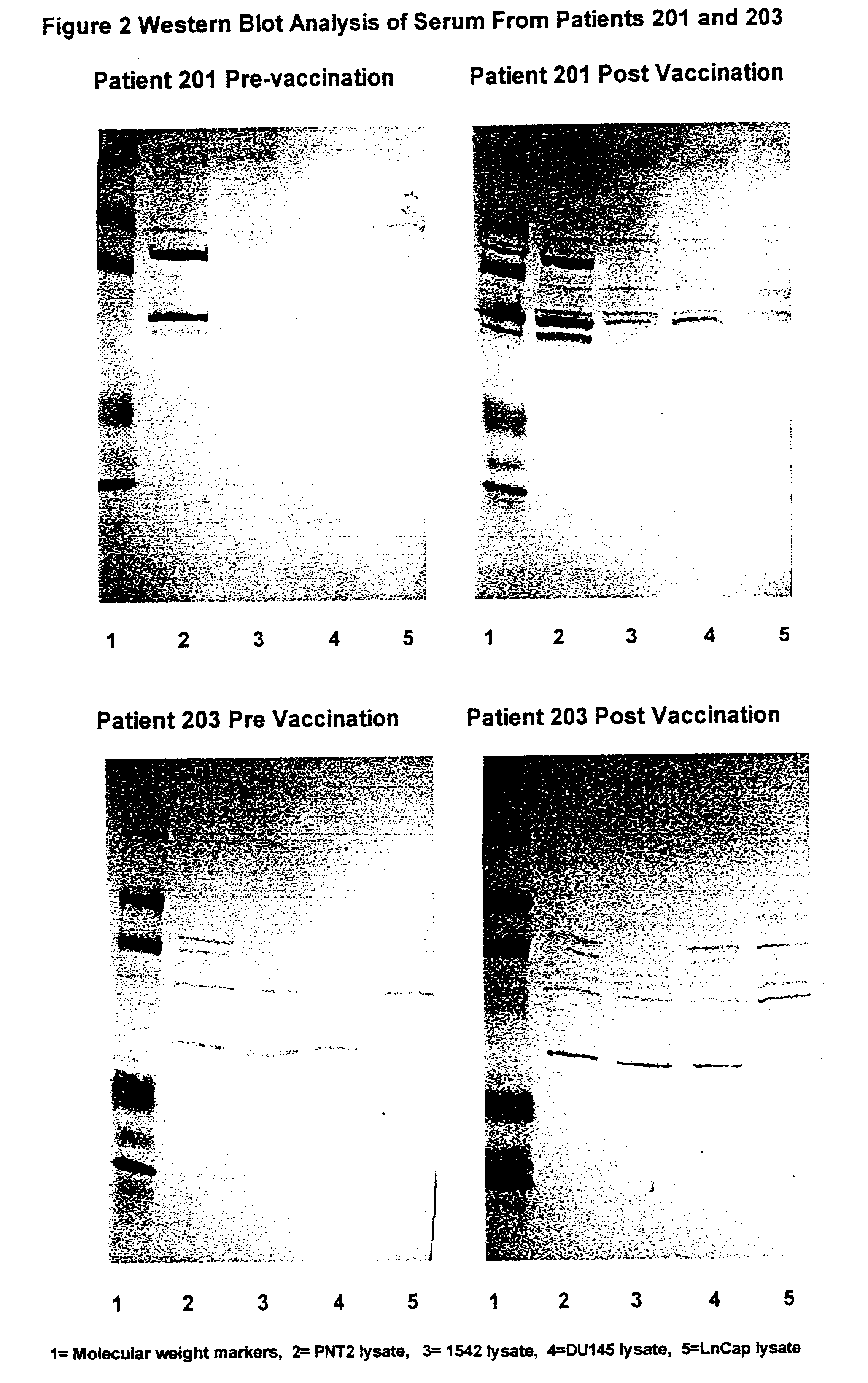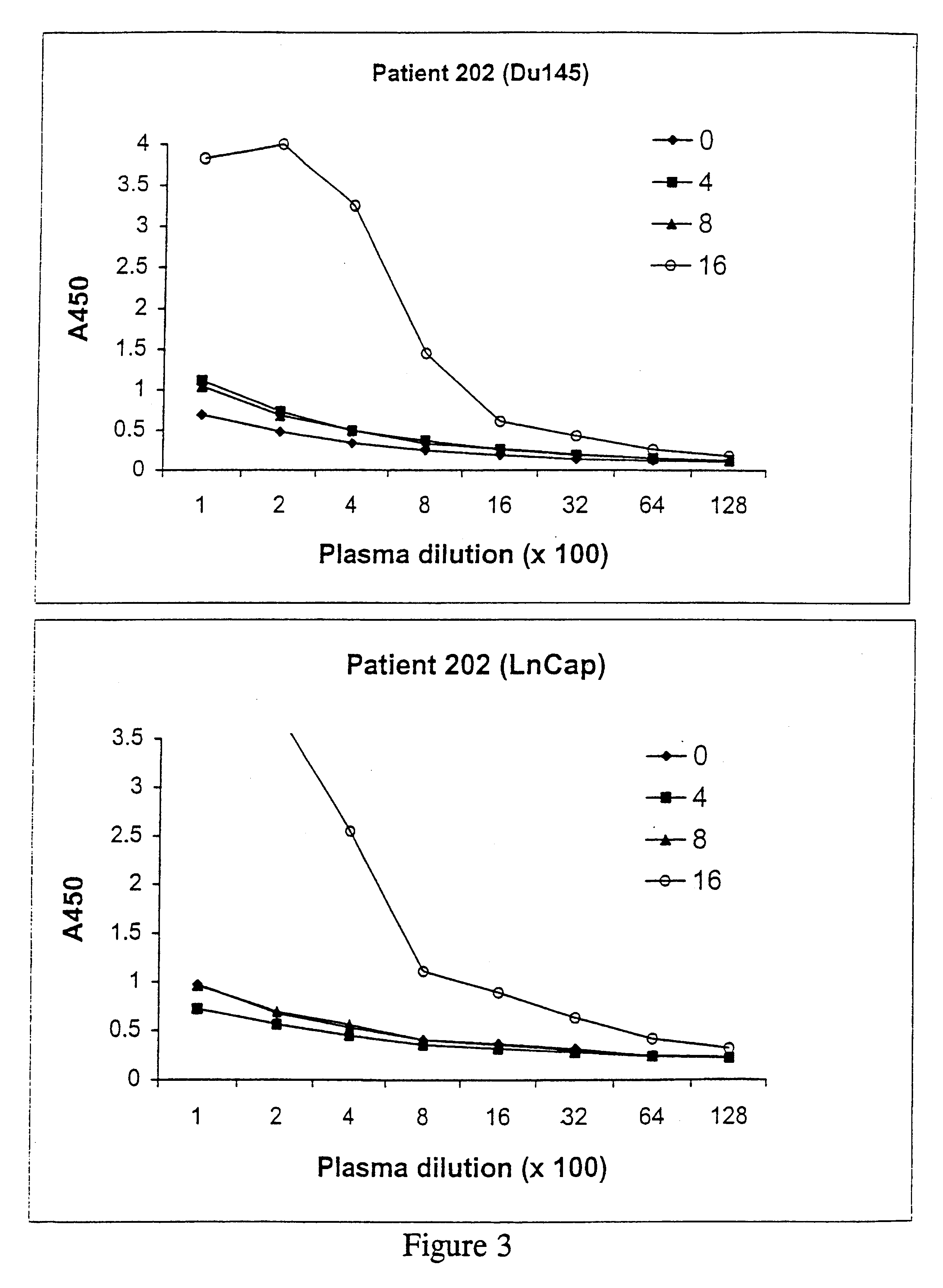Cancer treatments
a cancer and treatment technology, applied in the field of cancer treatments, can solve the problems of lack of targeting capability, unsatisfactory treatment effect of monoclonal antibodies, and inability to meet the expectations of non-specific immunomodulation
- Summary
- Abstract
- Description
- Claims
- Application Information
AI Technical Summary
Problems solved by technology
Method used
Image
Examples
example 1
Growth, Irradiation, Formulation and Storage of Cells
An immortalised cell line derived from primary prostate tissue, namely NIH1542-CP3TX, was grown in roller bottle culture in KSFM medium supplemented with 25 .mu.g / ml bovine pituitary extract, 5 ng / ml of epidermal growth factor, 2 mM L-glutamine, 10 mM HEPES buffer and 5% foetal calf serum (FCS) (hereinafter called "modified KSFM") following recovery from liquid nitrogen stocks. Following expansion in T175 static flasks the cells were seeded into roller bottles with a growth surface area of 1,700 cm.sup.2 at 2-5.times.10.sup.7 cells per roller bottle.
Two metastasis-derived cell lines were also used, namely LnCap and Du145 both of which were sourced from ATCC. LnCap was grown in large surface area static flasks in RPMI medium supplemented with 10% FCS and 2 mM L-glutamine following seeding at 1-10.times.10.sup.6 cells per vessel and then grown to near confluence. Du145 was expanded from frozen stocks in static flasks and then seeded...
example 2
The invention can also be applied to earlier stage prostate cancer patients, and the immunotherapy can also be administered through different routes. As an example, the following protocol can be used:
Cells are grown, irradiated, formulated and stored according to the methods described in Example 1. Prostate cancer patients are selected prior to radical prostatectomy and are vaccinated with a combination of three irradiated cell lines (8.times.10.sup.6 cells per line) three times at two week intervals prior to surgery. Approximately half of the patients are vaccinated intradermally into four draining lymph node basins (cell lines mixed with mycobacterial adjuvant for at least the first dose); remaining patients are injected intra-prostatically, with intradermal mycobacterial adjuvant administered at a distant site for at least the first dose. Biopsy samples of the prostate removed by surgery are examined for prostate cell death and the presence of infiltrating immune cells. In additi...
PUM
| Property | Measurement | Unit |
|---|---|---|
| surface area | aaaaa | aaaaa |
| volume | aaaaa | aaaaa |
| v/v | aaaaa | aaaaa |
Abstract
Description
Claims
Application Information
 Login to View More
Login to View More - R&D
- Intellectual Property
- Life Sciences
- Materials
- Tech Scout
- Unparalleled Data Quality
- Higher Quality Content
- 60% Fewer Hallucinations
Browse by: Latest US Patents, China's latest patents, Technical Efficacy Thesaurus, Application Domain, Technology Topic, Popular Technical Reports.
© 2025 PatSnap. All rights reserved.Legal|Privacy policy|Modern Slavery Act Transparency Statement|Sitemap|About US| Contact US: help@patsnap.com



